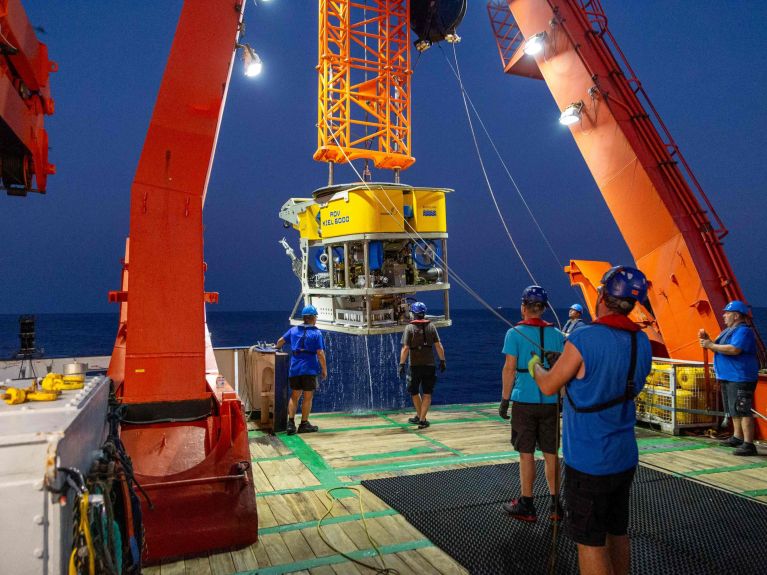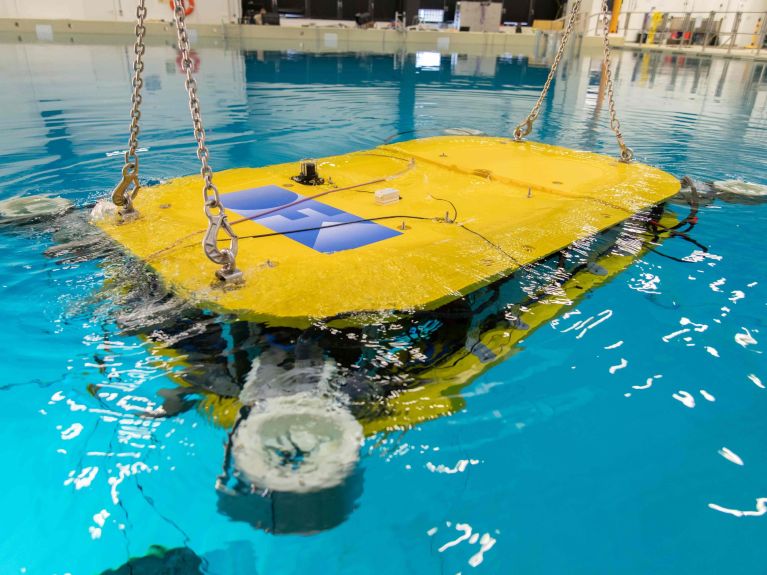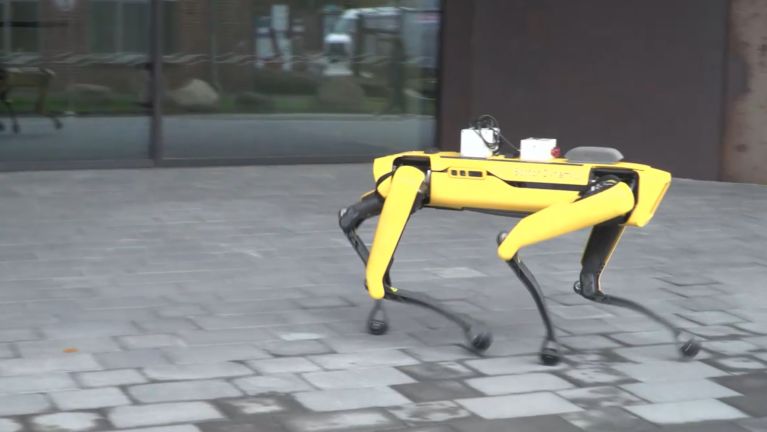Protecting the oceans with AI
Dismantling world war munitions and analysing the deep sea: artificial intelligence makes it easier to explore the oceans – and it helps protect them, too.

Deep sea exploration with AI
Darkness, cold and enormous pressure: the deep sea remains largely unexplored due to its extreme conditions. The largest ecosystem on our planet is increasingly threatened by economic interests – resources such as iron manganese nodules make the deep sea a potential area for mining. For this reason, the GEOMAR Helmholtz Centre for Ocean Research Kiel is working on the automatic classification of the deep seabed with the help of AI: Maps are being produced that are to serve as a basis for the ecologically responsible designation of extraction licences and protected areas. Together with international researchers, GEOMAR is also deploying a towed camera and an underwater robot to explore deep-sea habitats, for example to discover new species and gain a better understanding of the ocean food web.
Dieses YouTube-Video kann in einem neuen Tab abgespielt werden
YouTube öffnenThird party content
We use YouTube to embed content that may collect data about your activity. Please review the details and accept the service to see this content.
Open consent formSafe recovery of ammunition using AI
The robots of the German Research Center for Artificial Intelligence (DFKI) are helping to recover ticking time bombs that lay on the seabed of the North Sea and the Baltic Sea. The DFKI’s CleanSeas project is dedicated to an urgent task: there are more than one million tonnes of munitions from the two world wars in northern European waters. These rusting pollution burdens release toxins into the environment, and they could potentially even detonate uncontrollably. In future, robotic systems will autonomously detect underwater explosive ordnance and prepare it for removal.

Analysing the sea ice with AI
At the Neustrelitz site of the German Aerospace Center (DLR), work is also being done on the issue of safety, in this case with a particular focus on sea ice. It can be pushed together by wind or currents, thereby posing a hazard to shipping in polar waters. In future, an AI will generate ice maps that were previously drawn manually based on satellite images. For training purposes, it receives data on different categories of sea ice that manifest themselves in different structures.



